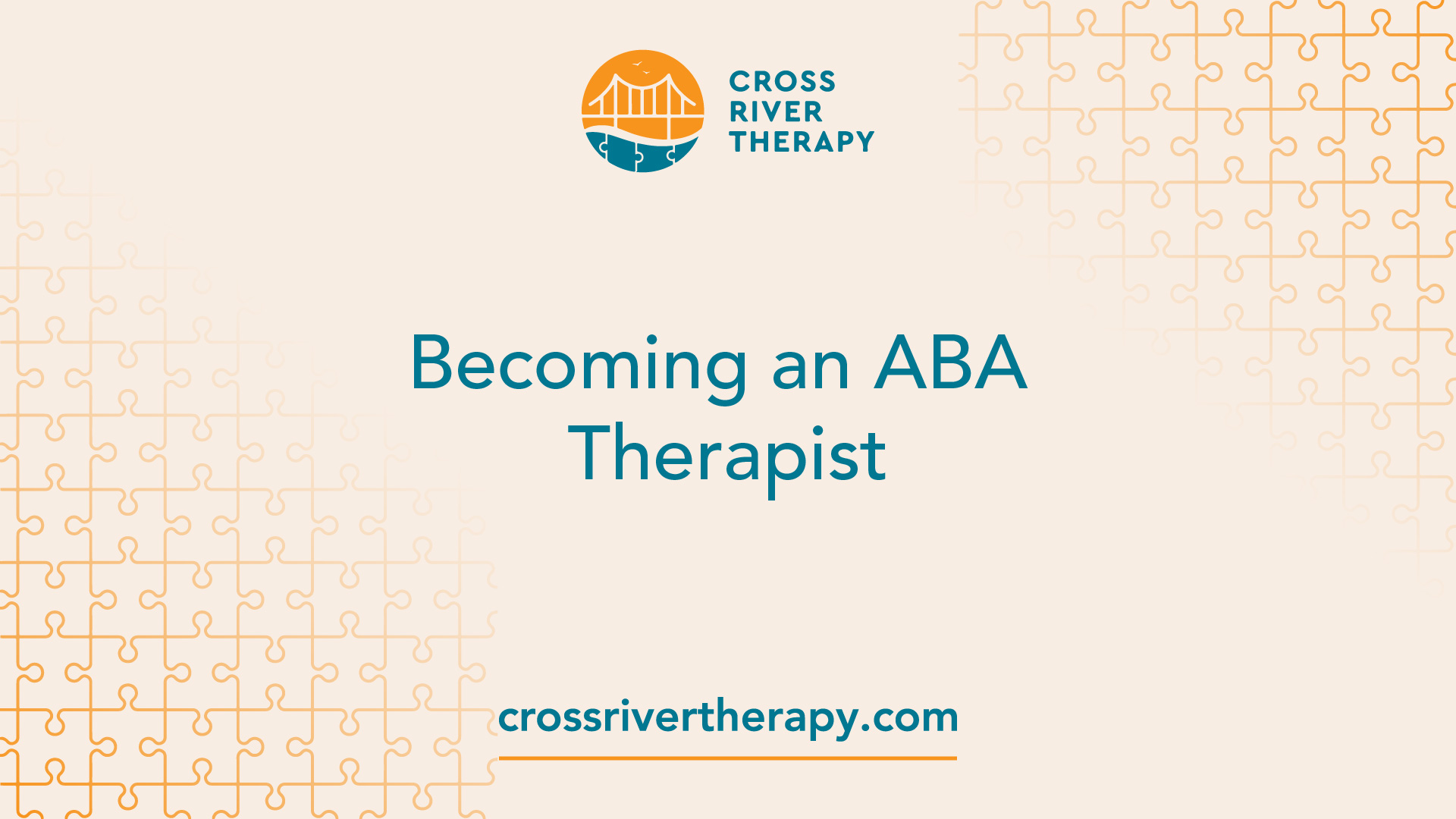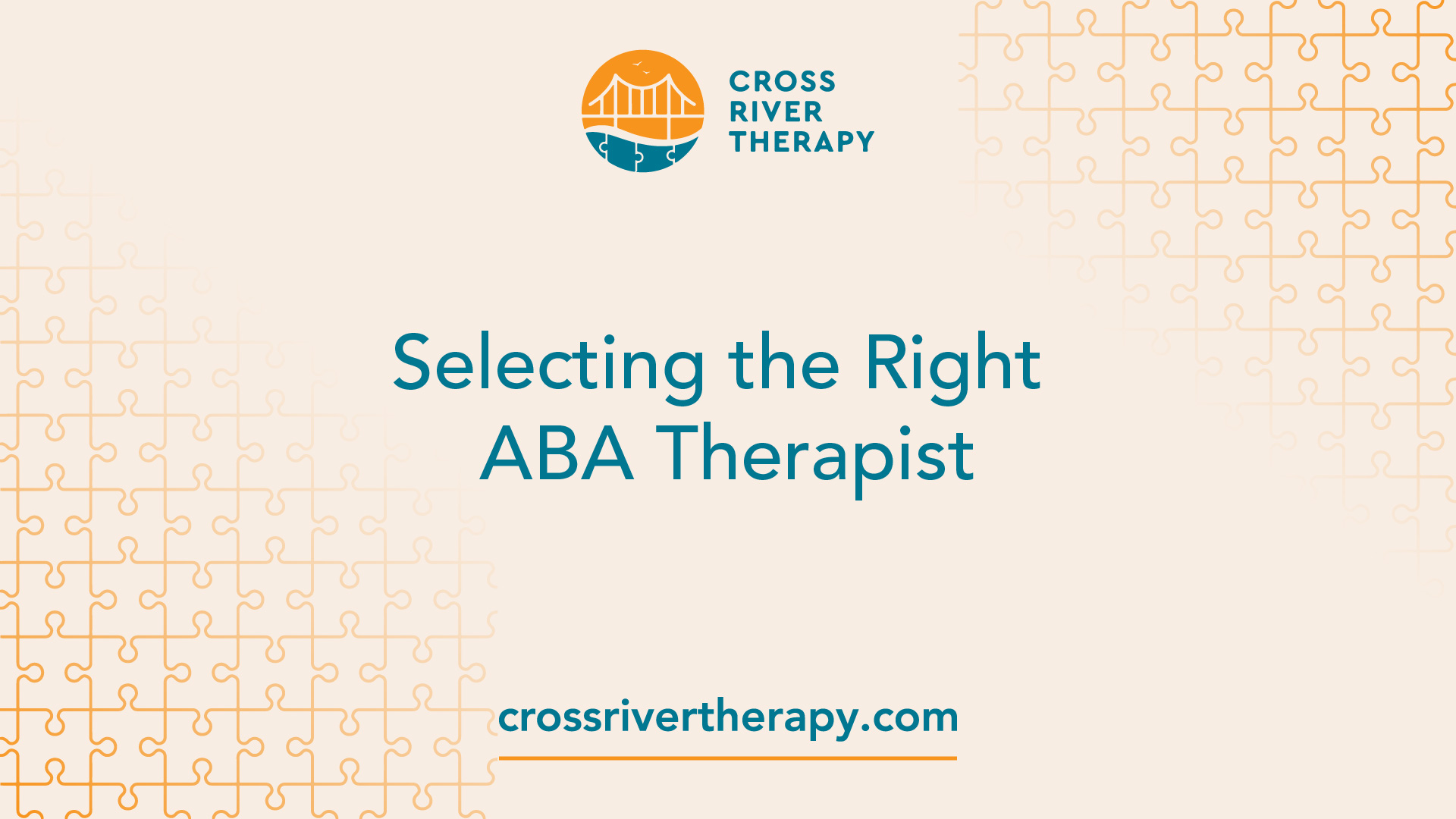How to Find Qualified ABA Therapists?
Learn how to find the right ABA therapist for your child with autism. Get the support you need today!
Finding Qualified ABA Therapists
When searching for qualified ABA therapists for your child, it's essential to consider their education, certification, experience, and licensure criteria. This will help ensure that you find a therapist with the necessary skills and expertise to provide effective therapy.

Education and Certification Requirements
To become a licensed and board-certified ABA therapist, individuals typically need to complete several years of education and training. The process begins with earning a bachelor's degree, often in psychology, special education, or other behavioral sciences. Many ABA therapists then pursue a master's degree in a related field. This comprehensive education equips them with the knowledge and foundation needed to understand and implement ABA therapy techniques.
Certification through the Behavior Analyst Certification Board (BACB) is a crucial step for becoming a qualified ABA therapist. The BACB offers two levels of certification: Registered Behavior Technician (RBT) and Board Certified Behavior Analyst (BCBA). The RBT certification requires a high school diploma or equivalent, completion of a 40-hour training program, and passing an exam. On the other hand, the BCBA certification requires a master's degree in psychology or a related field, completion of a BACB-approved course sequence, supervised experience, and passing an exam.
Experience and Licensure Criteria
In addition to education and certification, experience is a vital factor in determining the qualifications of an ABA therapist. The BACB requires ABA therapists to have 1,500-2,000 hours of field experience. Many states in the U.S. also have strict requirements regarding field experience for licensed board-certified behavior analysts practicing ABA therapy.
Licensure requirements for ABA therapists vary by state. Some states require BCBA certification for licensure, while others have additional criteria. It's important to research the specific licensure requirements in your state to ensure that the ABA therapist you choose meets all necessary criteria. Many employers also require ABA therapists to hold both a license and BCBA certification [2].
When searching for a qualified ABA therapist, be sure to inquire about their education, certification, experience, and licensure status. This will help you make an informed decision and find a therapist who is well-equipped to meet your child's specific needs. Remember to ask for references and seek recommendations from trusted sources to further validate the qualifications and expertise of potential ABA therapists.
Finding a qualified ABA therapist is an important step in supporting your child's development and progress. By considering their education, certification, experience, and licensure criteria, you can ensure that you find a therapist who possesses the necessary skills and knowledge to provide effective ABA therapy.
Becoming an ABA Therapist
For individuals who are passionate about helping children with autism and want to pursue a career in Applied Behavior Analysis (ABA) therapy, becoming a certified ABA therapist is a crucial step. In this section, we will provide an overview of certification programs and the associated cost and time commitment.

Certification Programs Overview
To become a certified ABA therapist, individuals must complete a certification program approved by the Behavior Analyst Certification Board (BACB) which offers two levels of certification: Registered Behavior Technician (RBT) and Board Certified Behavior Analyst (BCBA).
The RBT certification is an entry-level certification designed for individuals who work directly with clients under the supervision of a BCBA. To obtain this certification, individuals need to have a high school diploma or equivalent, complete a 40-hour training program, and pass an exam. The RBT certification is an excellent starting point for individuals who are new to the field of ABA therapy and want to gain practical experience.
On the other hand, the BCBA certification requires a master's degree in psychology or a related field. Individuals pursuing the BCBA certification need to complete a BACB-approved course sequence, gain supervised experience, and pass an exam. This certification allows individuals to work independently as behavior analysts and create individualized treatment plans for clients.
Cost and Time Commitment
The cost and time commitment required to become an ABA therapist can vary based on individual circumstances. The time it takes to become certified typically ranges from two to six years. Individuals with a bachelor's degree in psychology or a related field can start gaining experience as a behavior technician while completing a BACB-approved course sequence for the BCBA certification [1].
The cost of certification programs can also vary depending on factors such as the educational institution and location. However, it's worth noting that many employers offer tuition reimbursement or financial incentives for employees pursuing certification or continuing education in ABA therapy. Scholarships and grants are also available for individuals pursuing careers in autism treatment, making it a more accessible career path for many.
While the path to becoming a certified ABA therapist may require a significant investment of time and resources, the rewards of making a positive impact on the lives of individuals with autism can be incredibly fulfilling. Aspiring ABA therapists should consider the long-term career opportunities and the opportunity to make a difference in the lives of children with autism.
In the next section, we will discuss the importance of selecting the right ABA therapist and the qualifications and credentials to consider when making this choice.
Selecting the Right ABA Therapist
When it comes to finding the right ABA therapist for your child, it's important to consider their qualifications and credentials, as well as observe therapy sessions to ensure compatibility and effectiveness.

Qualifications and Credentials
ABA therapists should have the necessary qualifications and credentials to provide effective therapy for individuals with autism. To become a certified ABA therapist, one must complete a certification program approved by the Behavior Analyst Certification Board (BACB). The BACB offers two levels of certification: Registered Behavior Technician (RBT) and Board Certified Behavior Analyst (BCBA) [1].
The RBT certification requires a high school diploma or equivalent, completion of a 40-hour training program, and passing an exam. On the other hand, the BCBA certification requires a master's degree in psychology or a related field, completion of a BACB-approved course sequence, supervised experience, and passing an exam. These qualifications ensure that the therapist has the necessary knowledge and skills to provide evidence-based ABA therapy.
When selecting an ABA therapist, it's essential to inquire about their educational background, certifications, and any additional training they have received in Applied Behavior Analysis. A strong foundation in ABA therapy typically includes a Bachelor's degree in Psychology and a certification in Applied Behavior Analysis, along with specialized courses in ABA principles and techniques [3].
Observing Therapy Sessions
Observing therapy sessions can provide valuable insight into the therapist's approach and their ability to engage and connect with your child. It is recommended to request the opportunity to observe a therapy session before committing to a particular ABA therapist. This allows you to assess the therapist's ability to build rapport, communicate effectively, and implement behavior analysis techniques.
During the observation, pay attention to how the therapist interacts with your child. Are they patient, understanding, and responsive to your child's needs? Do they use positive reinforcement and appropriate behavior management strategies? Additionally, observe how the therapist structures the session, sets goals, and collects data to monitor progress.
Observing therapy sessions not only helps you evaluate the therapist's skills but also provides an opportunity to ask questions and address any concerns you may have. This collaborative approach ensures that you find an ABA therapist who aligns with your child's needs and your family's goals.
By considering the qualifications and credentials of ABA therapists and observing therapy sessions, you can make an informed decision when selecting the right therapist for your child. Remember, finding a therapist who not only possesses the necessary qualifications but also connects well with your child can greatly enhance the effectiveness and success of ABA therapy.
Working with ABA Therapists
When it comes to ABA therapy for children diagnosed with autism, working collaboratively with qualified ABA therapists is essential for positive outcomes. ABA therapists employ a therapeutic approach focused on helping autistic individuals navigate the world while respecting their needs and boundaries. It's important to build a positive and long-term relationship with the therapist to foster a supportive and effective therapeutic environment.
Therapeutic Approach
A key aspect of working with ABA therapists is understanding their therapeutic approach. ABA therapy utilizes evidence-based techniques to address behaviors, communication skills, social skills, and other areas of development in individuals with autism. The therapist will create individualized treatment plans tailored to the specific needs and goals of the child. These plans may include strategies such as positive reinforcement, prompting, and shaping to encourage desired behaviors and skills.
ABA therapists focus on breaking down complex skills into smaller, manageable steps, allowing individuals with autism to learn and master one step at a time. This systematic approach helps build a solid foundation for long-term progress and independence. It's important for parents to actively participate in therapy sessions and collaborate with the therapist to reinforce the strategies learned during sessions in the child's daily life. This consistency between therapy sessions and home environment greatly enhances the effectiveness of ABA therapy.
Collaborative Care Approach
In addition to the therapeutic aspect, ABA therapy also emphasizes a collaborative care approach. ABA therapists work alongside other professionals, such as speech therapists, occupational therapists, special education teachers, and developmental pediatricians, to ensure a holistic approach to treatment and support for individuals with autism. This interdisciplinary collaboration allows for a comprehensive understanding of the child's needs and facilitates a coordinated effort to address different aspects of their development.
Collaboration with the client's family is particularly important in ABA therapy. Involving the family in the therapy process helps promote positive behavior change and achieve long-term success. ABA therapists work closely with parents to provide guidance, support, and training on how to implement strategies at home, ensuring consistency and reinforcement of skills. This partnership between the therapist and the family creates a strong support system that enhances the child's progress and generalization of skills beyond therapy sessions.
By working closely with ABA therapists who employ a therapeutic and collaborative care approach, parents can help maximize the benefits of ABA therapy for their child with autism. Remember that ABA therapy is not about curing or reducing autism symptoms, but about providing strategies and support to navigate the world effectively while respecting the individual's needs and boundaries. With open communication, active participation, and a collaborative mindset, parents can play a vital role in their child's progress and overall development.
ABA Therapist Responsibilities
When seeking the assistance of an Applied Behavior Analysis (ABA) therapist for your child diagnosed with autism, it's important to understand the key responsibilities they undertake. A qualified ABA therapist plays a crucial role in implementing effective interventions and helping individuals with autism develop essential skills and reduce challenging behaviors.
Behavior Analysis Techniques
One of the primary responsibilities of an ABA therapist is to utilize behavior analysis techniques to assess and address challenging behaviors in individuals with autism. This involves conducting a detailed functional behavior assessment (FBA) to identify the triggers and motivations behind the behavior. By understanding the function of the behavior, the therapist can develop a behavior intervention plan (BIP) that includes evidence-based strategies to effectively address the behavior and promote positive alternatives.
ABA therapists employ a variety of behavior analysis techniques, such as positive reinforcement, prompting, shaping, and fading, to teach new skills and reduce problematic behaviors. These techniques are based on the principles of behavior analysis, which emphasize the use of positive reinforcement and systematic teaching methods to enhance learning and behavior change.
Individualized Treatment Plans
Another vital responsibility of an ABA therapist is the development of individualized treatment plans for each client. These treatment plans are tailored to the specific needs and goals of the individual with autism, taking into account their strengths, challenges, and areas for growth.
To create an effective treatment plan, the ABA therapist conducts thorough assessments, collaborates with the client, their family, and other professionals involved in their care, and sets meaningful goals. The treatment plan incorporates evidence-based practices and strategies that are tailored to the unique needs of the individual. Regular data collection and analysis are also essential components of the therapist's responsibilities, allowing them to monitor progress, make adjustments to the treatment plan as needed, and ensure that interventions are effective in promoting positive outcomes.
By implementing behavior analysis techniques and developing individualized treatment plans, ABA therapists aim to enhance communication skills, social interactions, adaptive behaviors, and overall independence in individuals with autism. Their expertise and dedication contribute to the growth and development of individuals with autism, empowering them to reach their full potential.
To learn more about the future outlook for ABA therapy, including job prospects and the collaborative treatment approach, continue reading our article on the future of ABA therapy.
Future of ABA Therapy
As the field of Applied Behavior Analysis (ABA) therapy continues to evolve, there are several aspects to consider when looking at the future of this treatment modality.
Job Outlook and Growth
The job outlook for ABA therapists is highly promising, with a significant demand for qualified professionals in the field. According to the ABTA, the field of ABA therapy is expected to experience a rapid growth rate, with an estimated 22% increase in job opportunities from 2018 to 2028. This surge in demand is driven by the increasing prevalence of autism spectrum disorder (ASD) and the recognition of ABA therapy as an effective treatment option.
ABA therapists can find employment opportunities in various settings, including schools, clinics, and private practices. This wide range of options provides ample job prospects for those who have completed the necessary education and certification requirements. To learn more about ABA therapy in school settings, you can refer to our article on ABA therapy and school integration.
Collaborative Treatment Approach
The future of ABA therapy also emphasizes the importance of a collaborative treatment approach. ABA therapists work closely with other professionals, such as speech therapists, occupational therapists, and educators, to provide comprehensive care for individuals with autism.
Collaboration between different disciplines allows for a holistic approach to treatment, addressing various aspects of an individual's development. For example, ABA therapy can complement communication skills interventions by targeting specific behaviors and reinforcing effective communication strategies.
By working collaboratively, professionals can share their expertise, exchange ideas, and ensure that interventions are coordinated, consistent, and tailored to the unique needs of each individual. This multidisciplinary approach maximizes the potential for positive outcomes and enhances the overall effectiveness of ABA therapy.
As the field of ABA therapy continues to grow, advancements in research, technology, and treatment approaches will further enhance the effectiveness of interventions. ABA therapy will continue to play a vital role in improving the lives of individuals with autism, empowering them to reach their full potential.
References
[2]: https://drexel.edu/soe/resources/career-path/how-to-aba-therapist/
[3]: https://www.goldstarrehab.com/parent-resources/aba-therapist-interview-questions-answers
[4]: https://www.autismspeaks.org/blog/questions-ask-aba-therapist



